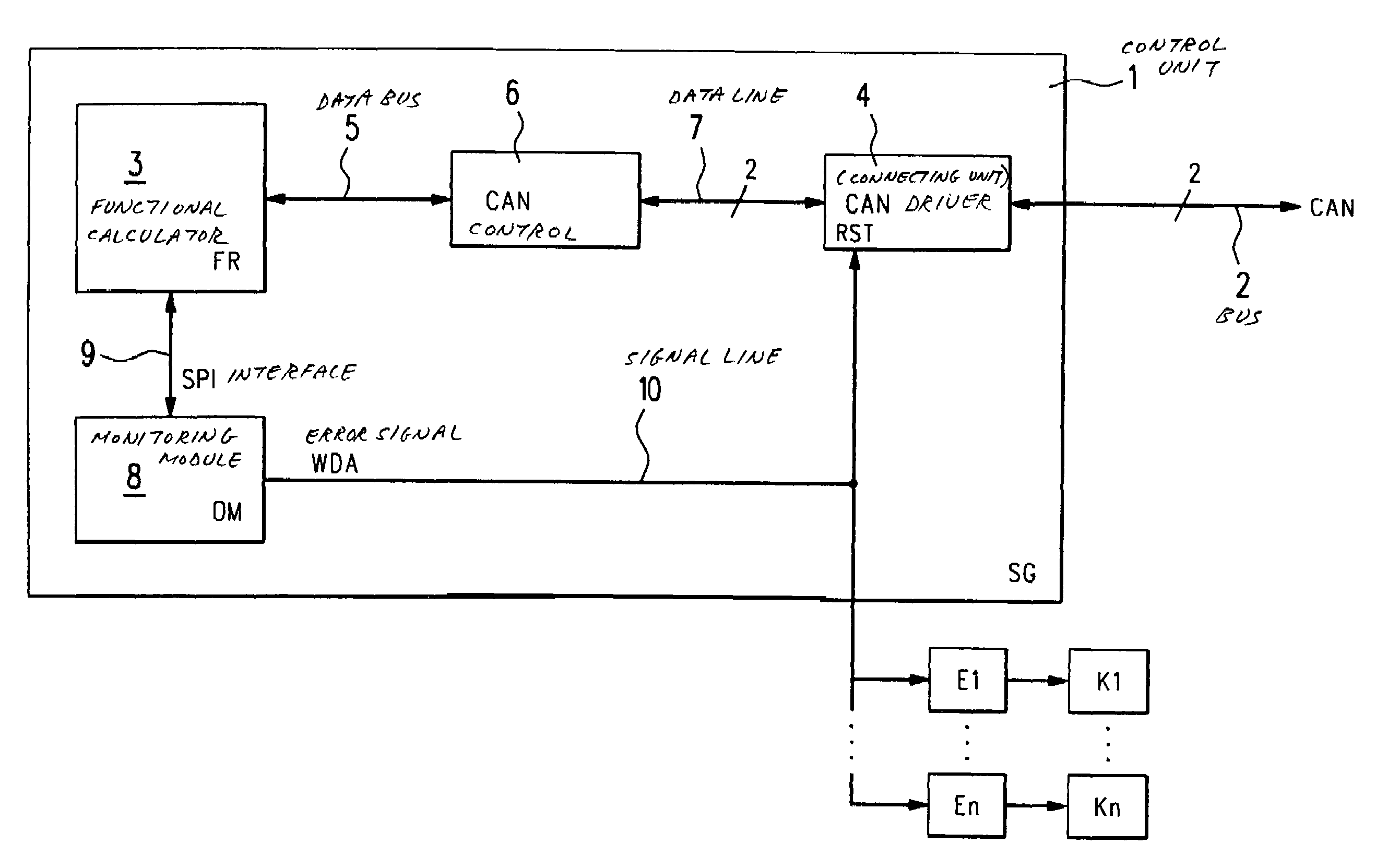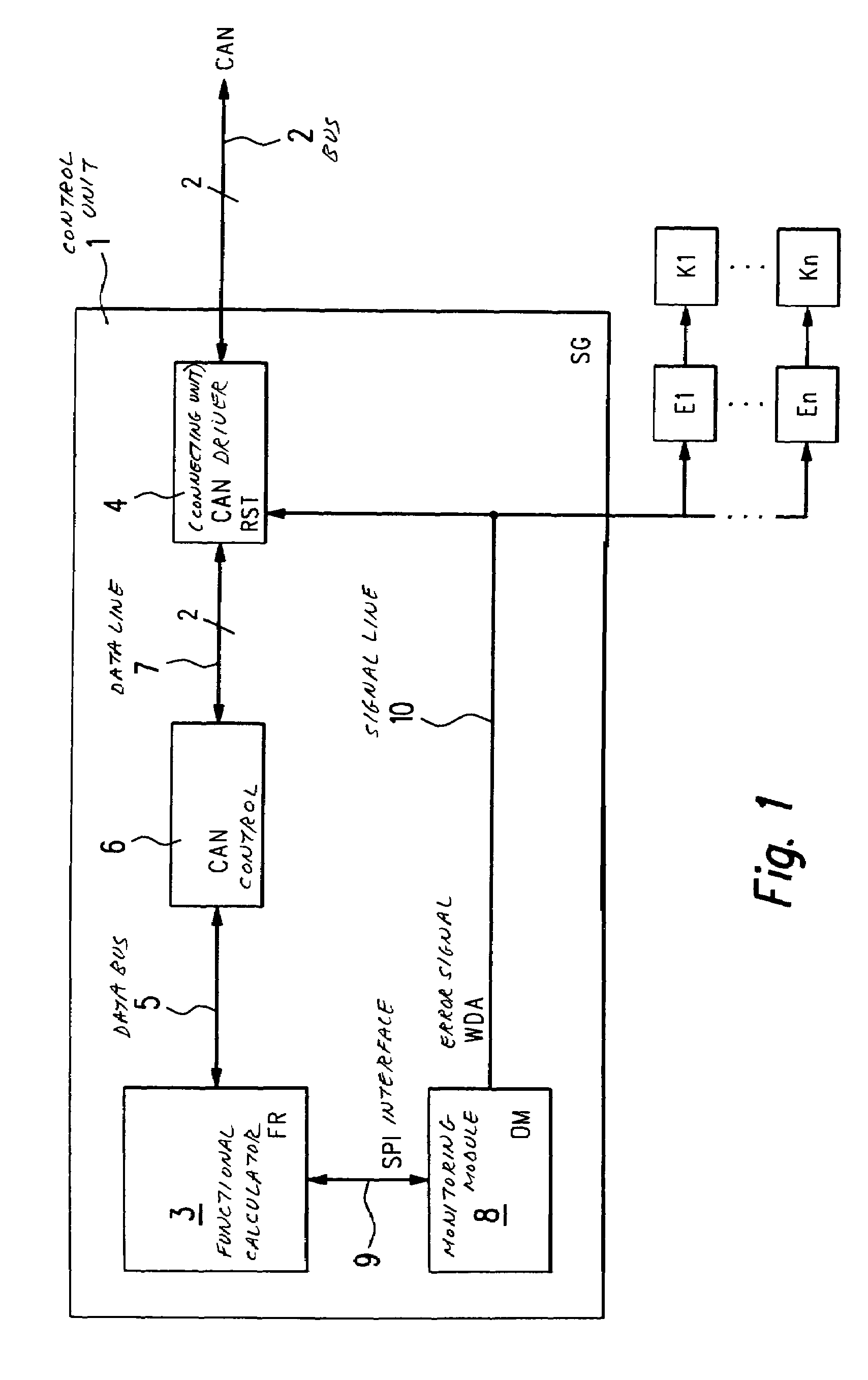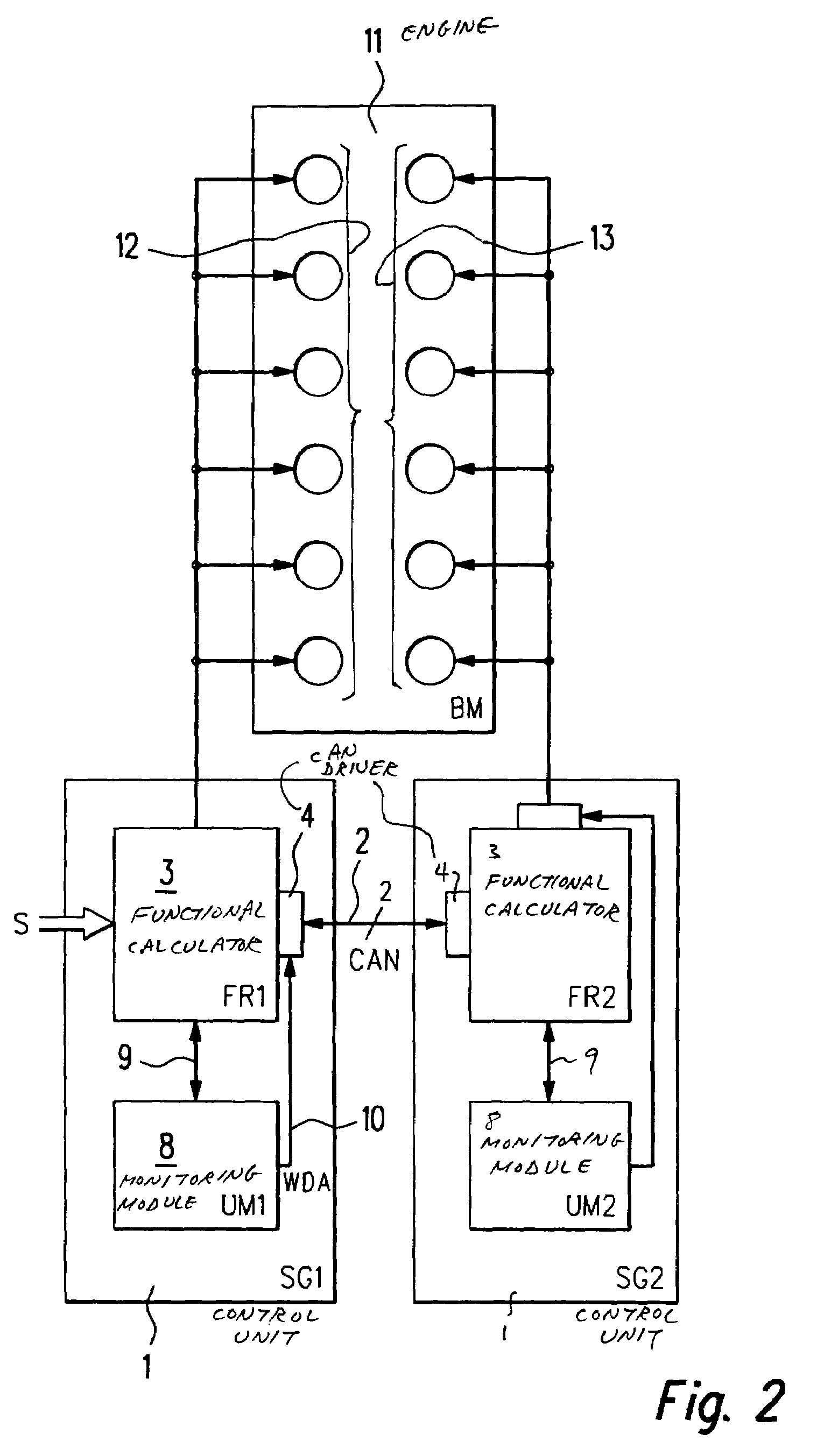Method and device for controlling operational processes, especially in a vehicle
a technology for operating processes and vehicles, applied in the field of vehicles, can solve problems such as inability to forward data cannot be transmitted erroneous functional units are not able to forward potentially faulty or undesired data via the bus system, so as to improve the safety of an integrated network and increase computational performan
- Summary
- Abstract
- Description
- Claims
- Application Information
AI Technical Summary
Benefits of technology
Problems solved by technology
Method used
Image
Examples
Embodiment Construction
[0025]In FIG. 1, a control unit SG according to the present invention is designated in its entirety by reference numeral 1. Control unit 1 is used, for example, for controlling and / or regulating operational sequences in a motor vehicle. Subsequently, we will go into more detail, for example, on a control unit 1 for controlling of operational sequences in an internal combustion engine of a motor vehicle. However, the present invention is generally applicable to all types of control units SG, such as for transmission control, vehicle dynamics control, drive slip control (ASR), an automatic distance control (EDC; electronic distance control), adaptive cruise control (ACC), etc, which control units are in contact with one another via a bus system 2 to an integrated control unit system, and which exchange data among one another via bus system 2. Bus system 2 is, for instance, developed as a CAN (controller area network).
[0026]Control unit 1 includes a functional calculator FR 3 which is ...
PUM
 Login to View More
Login to View More Abstract
Description
Claims
Application Information
 Login to View More
Login to View More - R&D
- Intellectual Property
- Life Sciences
- Materials
- Tech Scout
- Unparalleled Data Quality
- Higher Quality Content
- 60% Fewer Hallucinations
Browse by: Latest US Patents, China's latest patents, Technical Efficacy Thesaurus, Application Domain, Technology Topic, Popular Technical Reports.
© 2025 PatSnap. All rights reserved.Legal|Privacy policy|Modern Slavery Act Transparency Statement|Sitemap|About US| Contact US: help@patsnap.com



